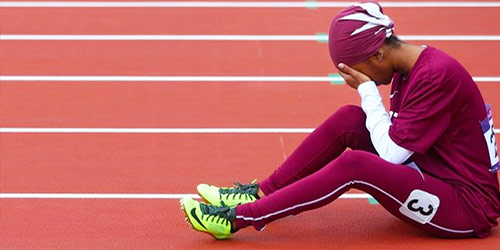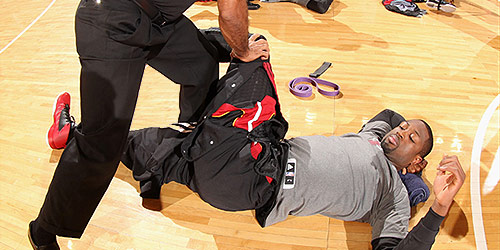By Harlan Selesnik, M.D., Team Physician for the NBA’s Miami Heat

An Introduction to Sports Medicine
Many people think of sports medicine as merely the treatment of athletic injuries. In fact the field of sports medicine has evolved to provide guidance for multiple different sports related areas, such as injury prevention, conditioning, and proper sports equipment.
In the 1960’s when sports in America began to receive much more national media attention, the injuries the athletes received also were under greater scrutiny. One of the goals of sports medicine was a better understanding of how the injuries occurred and what treatment options were available. In sports medicine the physician wants to keep the athlete participating in the sport safely while still allowing the injury to heal. Also, when a more serious injury occurs, newer diagnostic techniques such as MRI scans have aided greatly in early diagnosis and better treatment planning.
The advent of arthroscopic surgery which is the “microsurgery” performed on the athletes’ joints, has helped to revolutionize sports medicine treatment. In fact, the fiberoptics of the arthroscope have become so sophisticated that the surgeon can usually see better throughout a joint with three or four punctate holes for the scope and instruments, than the surgeon could previously see through a giant six inch scar. Arthroscopic surgery has also helped us in being better able to diagnose specific injuries, as well as in many circumstances repair tissues anatomically. Injuries such as meniscal cartilage tears, that previously may have required removal and which would eventually lead to arthritic changes, now can frequently be repaired, preventing arthritic changes and improving function. Other advances in arthroscopy include the treatment of instability problems and rotator cuff problems with arthroscopic techniques. Other joints that are amenable to arthroscopy include the elbow, wrist, carpal tunnel, ankle, hip and the great toe.
One of the greatest advances in sports medicine is the after-treatment of injuries. Physical therapy and occupational therapy programs and protocols have been developed for virtually all sports medicine injuries. This allows many injuries to be effectively treated non-surgically and still allow them to heal while the athlete is participating in sports. The post operative regimens allow many athletes to return to sports, weeks or months sooner, than they had done previously prior to the rehabilitation advances.
A better understanding of how injuries occur have helped significantly reduce many types of sports medicine injuries. Microfractures of the bone, known as stress fractures frequently can be prevented with proper shoe wear, soft cushioned orthotics, and proper training techniques. Similarly many muscle strains, which are tearing of the muscle fibers, can also be prevented with proper warm-up and stretching prior to and post-activity. High speed video technology has allowed us to study the motions of throwing a baseball or tennis strokes, and that has helped us analyze where injuries occur and how to prevent many of these problems. Advances in sports equipment and technology have also helped to reduce injuries.
It used to be believed that women participating in sports were more likely to be injured than men. Recent studies have shown that properly conditioned women and men have similar injury rates. However there is a higher rate of injury to the anterior cruciate ligament of the knee in women as compared to men and this is the subject of many research projects that are currently being undertaken. Children in sports is another area of active sports medicine research as well as athletes with Down syndrome and other genetic conditions.
Overall among all Americans, but particularly young Americans, there is a general interest in improved conditioning, working out, and sports participation. With higher numbers of people involved in these activities, there will be more injuries. One of the goals of this website is to help educate young people about specific sports medicine problems in an effort to prevent injury and if an injury occurs, to allow rapid treatment to keep the athlete participating in their sport.

Dr. Selesnick attends to Miami Heat’s Dwayne Wade.
Click here to check out Dr Selesnick’s personal website:
http://www.jockdoc.md/ (sorry, website links seems to be temporarily down)

What Do You Think? Leave A Comment!